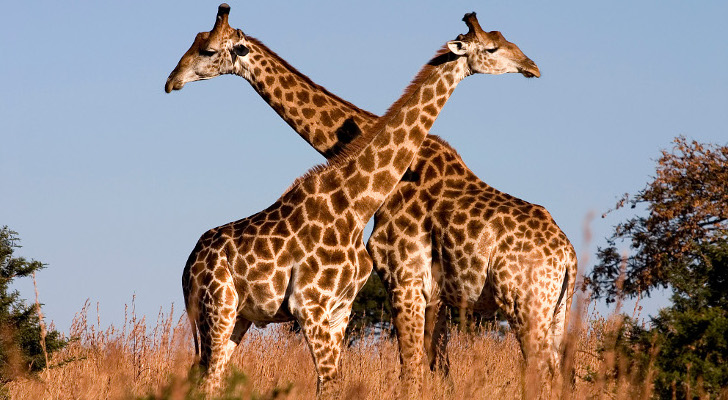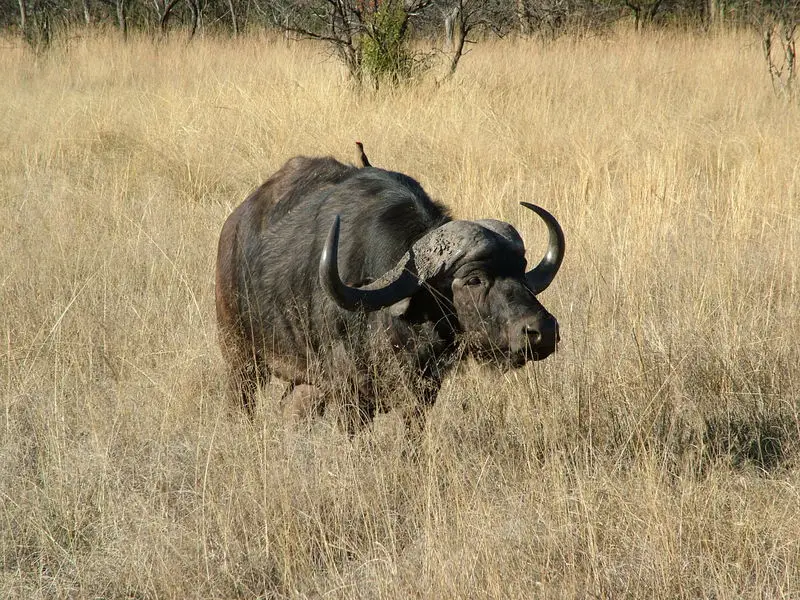Post by Vodmeister on Mar 17, 2014 22:58:28 GMT 5
Giraffe - Giraffa camelopardalis
The giraffe (Giraffa camelopardalis) is an African even-toed ungulate mammal, the tallest living terrestrial animal and the largest ruminant. Its specific name refers to its camel-like face and patches of color on a light background, which bear a vague resemblance to a leopard's spots. The giraffe is also noted for its extremely long neck and legs and prominent horns. It stands 5–6 m (16–20 ft) tall and has an average weight of 1,200 kg (2,600 lb) for males and 830 kg (1,800 lb) for females. Record sized males can reach weights of up to 1,800 kg (4,000 lb). It is classified under the family Giraffidae, along with its closest extant relative, the okapi. There are nine subspecies, which differ in size, coloration, pattern, and range. The giraffe's scattered range extends from Chad in the north to South Africa in the south and from Niger in the west to Somalia in the east. Giraffes usually inhabit savannas, grasslands, and open woodlands. They prefer areas with plenty of acacia trees, which are important food sources, and can browse at heights that most other herbivores cannot reach. While adults are nearly invulnerable to predation, lions, leopards, spotted hyenas and wild dogs prey on calves. Giraffes commonly gather in aggregations that usually disband every few hours. Males establish social hierarchies through "neckings", which are combat bouts where the neck is used as a weapon. Dominant males gain mating access to females, who bear the sole responsibility for raising the young.

African (Cape) Buffalo - Syncerus caffer
The African buffalo, affalo, nyati, Mbogo or Cape buffalo (Syncerus caffer) is a large African bovine. It is not closely related to the slightly larger wild Asian water buffalo, but its ancestry remains unclear. Owing to its unpredictable nature which makes it highly dangerous to humans, it has not been domesticated, unlike its Asian counterpart, the domestic Asian water buffalo. The Cape buffalo is a very robust species. Its shoulder height can range from 1 to 1.7 m (3.3 to 5.6 ft) and its head-and-body length can range from 1.7 to 3.4 m (5.6 to 11 ft). The tail can range from 70 to 110 cm (28 to 43 in) long. Savannah type buffaloes weigh 500 to 910 kg (1,100 to 2,000 lb), with males, normally larger than females, reaching the upper weight range. A record-sized savannah-type male weighed 1,000 kg (2,200 lb). Forest type buffaloes, at 250 to 455 kg (550 to 1,000 lb), are only half that size. Its head is carried low, its top located below the backline. The front hooves of the buffalo are wider than the rear, which is associated with the need to support the weight of the front part of the body, which is more powerful than the back.

The giraffe (Giraffa camelopardalis) is an African even-toed ungulate mammal, the tallest living terrestrial animal and the largest ruminant. Its specific name refers to its camel-like face and patches of color on a light background, which bear a vague resemblance to a leopard's spots. The giraffe is also noted for its extremely long neck and legs and prominent horns. It stands 5–6 m (16–20 ft) tall and has an average weight of 1,200 kg (2,600 lb) for males and 830 kg (1,800 lb) for females. Record sized males can reach weights of up to 1,800 kg (4,000 lb). It is classified under the family Giraffidae, along with its closest extant relative, the okapi. There are nine subspecies, which differ in size, coloration, pattern, and range. The giraffe's scattered range extends from Chad in the north to South Africa in the south and from Niger in the west to Somalia in the east. Giraffes usually inhabit savannas, grasslands, and open woodlands. They prefer areas with plenty of acacia trees, which are important food sources, and can browse at heights that most other herbivores cannot reach. While adults are nearly invulnerable to predation, lions, leopards, spotted hyenas and wild dogs prey on calves. Giraffes commonly gather in aggregations that usually disband every few hours. Males establish social hierarchies through "neckings", which are combat bouts where the neck is used as a weapon. Dominant males gain mating access to females, who bear the sole responsibility for raising the young.

African (Cape) Buffalo - Syncerus caffer
The African buffalo, affalo, nyati, Mbogo or Cape buffalo (Syncerus caffer) is a large African bovine. It is not closely related to the slightly larger wild Asian water buffalo, but its ancestry remains unclear. Owing to its unpredictable nature which makes it highly dangerous to humans, it has not been domesticated, unlike its Asian counterpart, the domestic Asian water buffalo. The Cape buffalo is a very robust species. Its shoulder height can range from 1 to 1.7 m (3.3 to 5.6 ft) and its head-and-body length can range from 1.7 to 3.4 m (5.6 to 11 ft). The tail can range from 70 to 110 cm (28 to 43 in) long. Savannah type buffaloes weigh 500 to 910 kg (1,100 to 2,000 lb), with males, normally larger than females, reaching the upper weight range. A record-sized savannah-type male weighed 1,000 kg (2,200 lb). Forest type buffaloes, at 250 to 455 kg (550 to 1,000 lb), are only half that size. Its head is carried low, its top located below the backline. The front hooves of the buffalo are wider than the rear, which is associated with the need to support the weight of the front part of the body, which is more powerful than the back.














